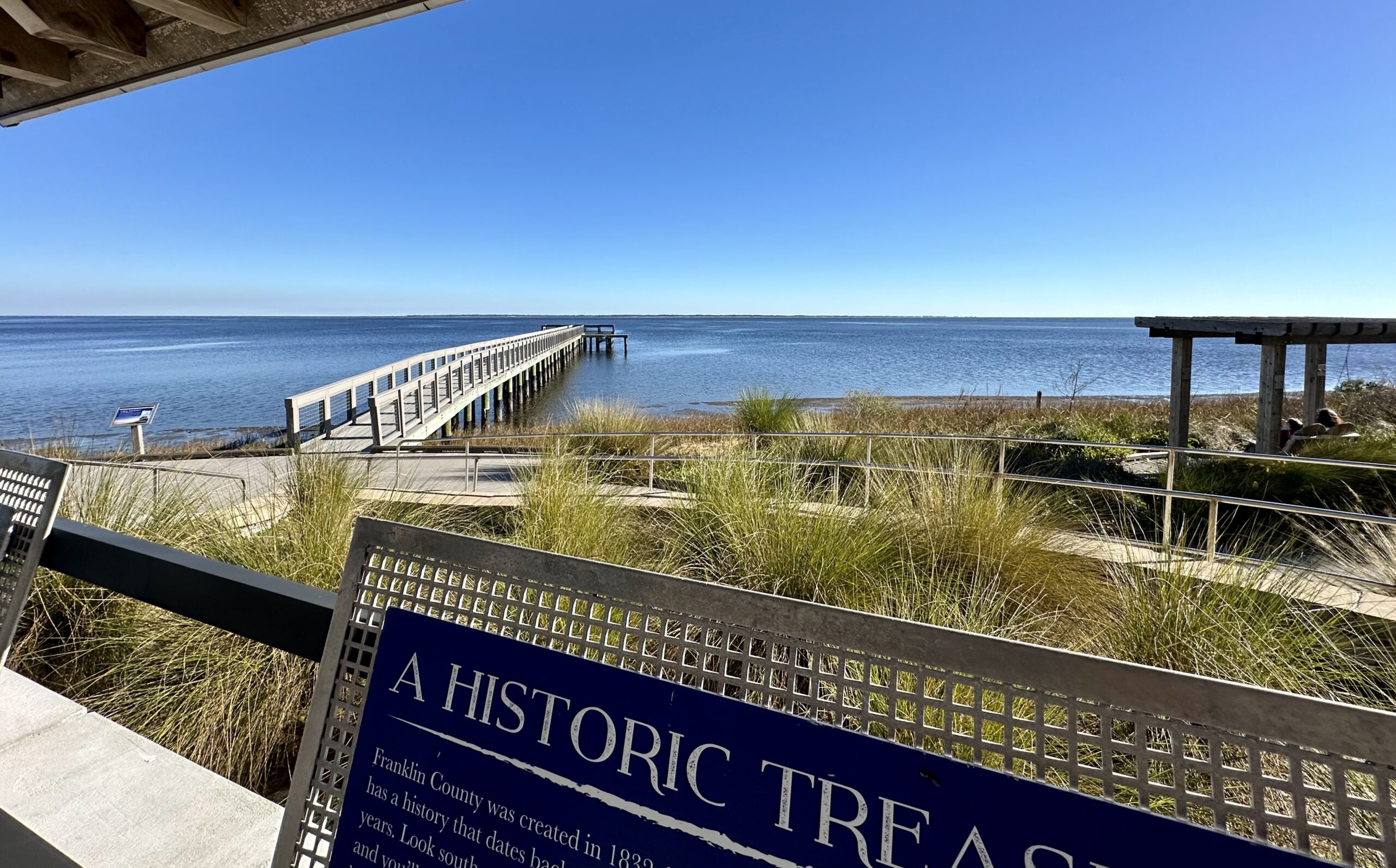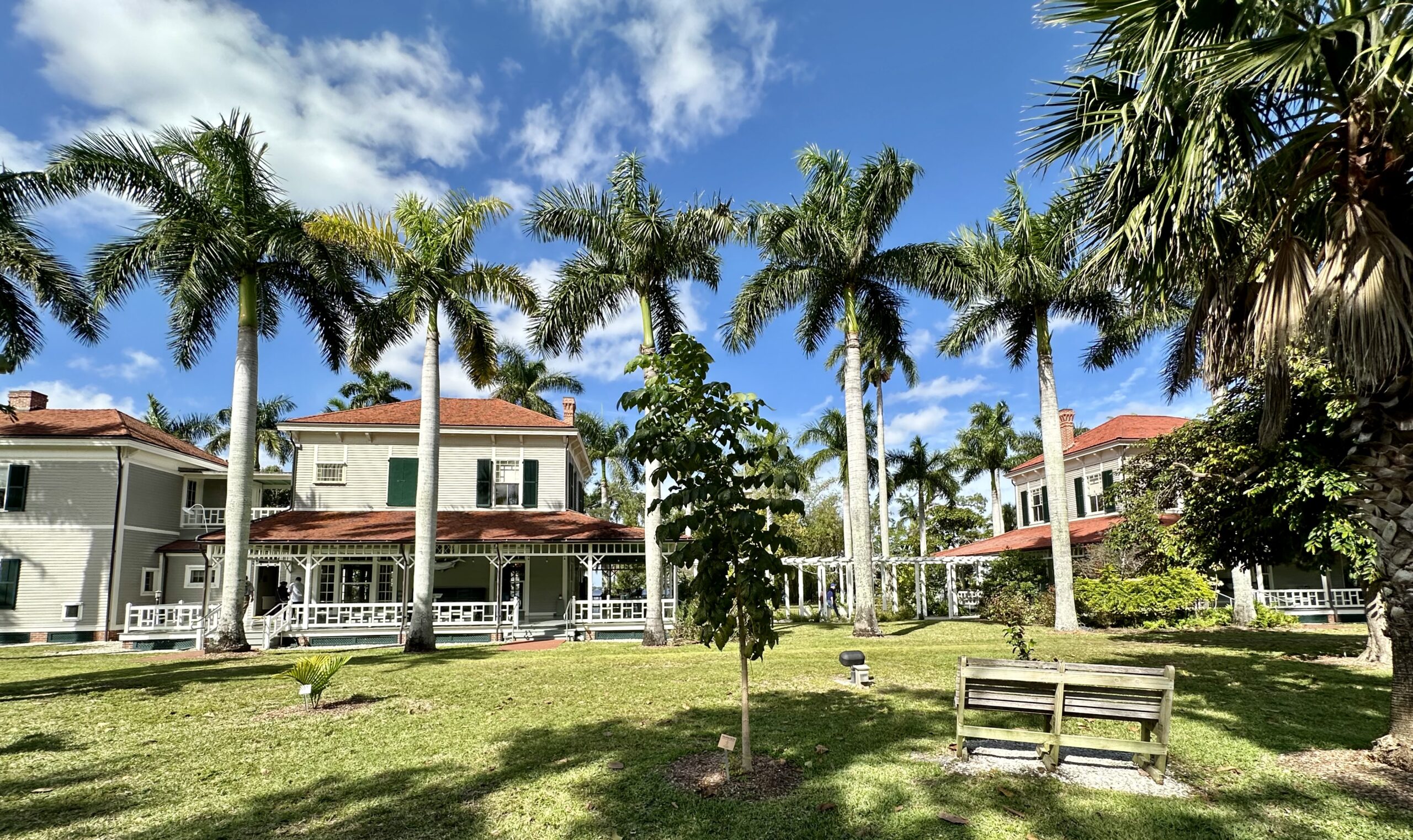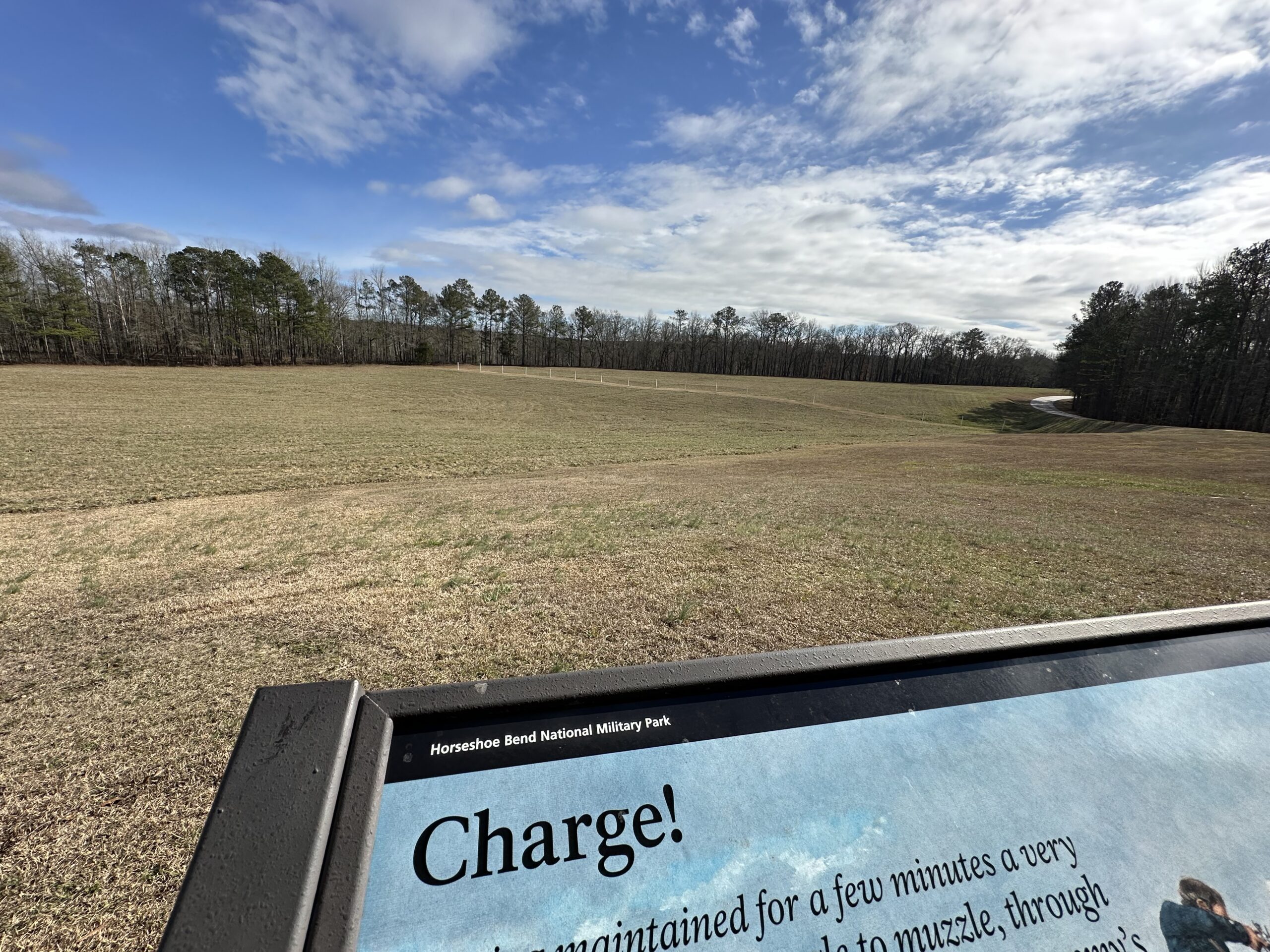On our way to Vicksburg National Military Park we drove through countless cotton fields in Alabama. This was the first time we could ever remember seeing the cotton bundled up like hay. These bundles are enormous, probably at least 6-8 feet tall (1.8 – 2.4 meters)

We spent one night at Twitley Branch Campground, an Army Corps of Engineers park.

This park is located on beautiful Okatibbee Lake. Most campsites back up directly to the water. In fact, we saw campers park their boats on the bank right behind their RVs.


Here are some pictures from our evening and morning walks around the park –



We were told by one of the camp hosts that a strong wind storm had hit the park earlier in the summer. We saw many full-sized trees toppled with their roots just pulled out of the ground. We’ve been very lucky not to get hit with any bad storms on this trip. Though, we also pay close attention to the weather and plan to be out of any area that is expecting a severe storm.

After our night at Okatibbee Lake we drove across Mississippi to Vicksburg. Vicksburg National Military Park is located right along the Mississippi River and covers the area where the Union Army (North) fought the Confederate Army (South) during the Civil War.
“As established in 1899, the park included the entire extent of the siege and defense lines. In the 1960s the park’s lower third was transferred to the city to complete I-20. Today, the main park area is in northeastern Vicksburg, MS.” – National Park Service (NPS)

As with most of our trips to National Park sites, we began in the Visitor Center. We saw information about the significance of this area and a 20-minute film that explained the campaign and siege of Vicksburg. It helped us to better understand our Nation’s history. The film is now available on line for everyone. Click here to view it.

“In mid-19th century America, rivers were highways. And the Mississippi was the greatest of them all – the nation’s main artery for commerce leading all the way to the Gulf of Mexico. By early 1863, two Confederate strongholds still blocked Union shipping from a key section of the river: Port Hudson in Louisiana, and here at Vicksburg.” – NPS
“Vicksburg is the key. The war can never be brought to a close until that key is in our pocket.”
President Abraham Lincoln
“October 1862 – Since late summer only Vicksburg, MS, and Port Hudson, LA, block Union control of the Mississippi River. The stronger and more important post, Vicksburg is the focus of military operations.” – NPS

“Union Maj. Gen. Ulysses S. Grant is ordered to clear the Mississippi River of Confederate resistance. Lt. Gen. John C. Pemberton – with 50,000 widely scattered Confederate troops – is expected to keep the river open.” – NPS



“Artillery, The King of Battle – The types of cannon you see here (pictured above) all saw action during the Vicksburg fighting. For centuries, artillery had ruled the battlefield. By the time of the Civil War, advances like rifled barrels, improved aiming, and ignition had made cannon more powerful – and more deadly than ever before. Here Confederate artillery made Vicksburg’s fortifications tough and closed down the Mississippi to Union traffic. Here also, Union cannon held Confederates captive inside their defenses, forcing their final surrender.” – NPS


There is a 16-mile road with a self-paced tour which begins at the Memorial Arch next to the Visitor Center.

“Tour the Battle Lines – During the war, major Confederate fortifications wrapped around Vicksburg to the north, east and south. When Union forces besieged the city, they encircled these defenses with their own positions. The tour road takes you first through the Union areas of assault and siege, and then along the Confederate defensive lines.” – NPS

All along the tour road there are red and blue metal markers. Red markers pertain to Confederate lines. Blue markers pertain to Union lines.

Our tour begins along the Union Lines.

“Reminders in Stone and Bronze – The men who fought here long ago made history in their struggle and sacrifice. Across the park, more than 1,300 monuments and markers have been placed to memorialize the soldiers and sailors who fell, and to implore future generations of Americans to never again take up arms against one another.” – NPS

“The many markers and monuments throughout the park tell stories with art and words.” – NPS

During the tour there are numbered stops that correspond to information you can pick up in the Visitor Center.

Tour Stop #1 – Battery De Golyer – “From this position a battery of guns, including those from the Eighth Michigan Artillery commanded by Capt. Samuel De Golyer, hammered the Confederate Great Redoubt directly ahead. At one time as many as 22 Federal artillery pieces were positioned here. Capt. De Golyer was mortally wounded while directing the fire of this battery.” – NPS

“The Union siege of Vicksburg was successful because of places like this. At Battery De Golyer, the Union army concentrated its cannon. Confederates spread theirs out. When a Confederate cannon fired, many Union guns replied knocking out the enemy gun.” – NPS

“Confederate General Pemberton moved his artillery back. Without the threat of enemy shells, Union troops dug toward Confederate lines. Battery De Golyer continued to pound Confederate fortifications and troops. After 47 days, weakened Confederates were forced to surrender.” – NPS


Tour Stop #2 – Shirley House – “‘The white house,’ (on the right at the top of the stairs) as Union troops called it, is the only surviving wartime structure in the park. During the siege it served as headquarters for the Forty-fifth Illinois Infantry, members of which built hundreds of bomb-proof shelters around it to protect themselves against Confederate artillery fire. It has been restored to its 1863 appearance.” – NPS

“Although they owned 25 enslaved workers, James Shirley and his wife Adeline were Union sympathizers. Their teenage son, Quincy, joined the Union troops at his doorstep in fighting the Confederates.” – NPS

“Digging In at the Shirley House – Imagine the scene here in June 1863. The hillside to your right (seen on the sign pictured below) had been completely transformed into a vast network of dugouts known as “shebangs.” These makeshift shelters protected the Union soldiers from the oppressive summer heat – and the threat of nearby Confederate guns. When the siege ended, the Shirley House stood badly damaged and abandoned.” – NPS

“Art That Honors – Classic Greek styles inspired many of the symbols you see. The frieze below the eagle on the Illinois Memorial shows Clio, the Muse of History, flanked by maidens who represent the North and the South.” – NPS


“The Illinois State Memorial, dedicated in 1906, cost over $190,000 – that’s more than $4.6 million in today’s dollars.” – NPS





The Shirley House was located “on the historic Jackson Road, a critical link between Jackson and Vicksburg during the Civil War. To guard this key entrance to the city, Confederate forces built a major fort here: the Third Louisiana Redan. Look to your left (picture below) at the end of the road – the high ground beyond is the old fort’s wall.

On May 22, 1863, Union troops swarmed down Jackson Road from the east to attack the Third Louisiana Redan. An innocent-looking ridge today, this once-massive structure posed a forbidding obstacle to Federal forces. The assault failed and Grant’s men withdrew to the safety of the ridge below the Shirley House” – NPS

Tour Stop #3 – Third Louisiana Redan – “Here was one of the major Confederate fortifications guarding the Jackson Rd. approach to Vicksburg. Concluding the fort was impregnable to direct assault, Gen. Grant ordered his troops to dig mines under the work and blow it up. The first mine was detonated June 25; the second, July 1. Neither broke the Confederate line.” – NPS

“Blasting Their Way – Direct assaults on the Confederate fortifications on May 19 and 22 ended in heavy Union losses. With Vicksburg’s defenses holding strong, Grant changed tactics and ordered a formal siege. Here, at Third Louisiana Redan, all phases of siege warfare were brought to bear on the earthen fort in front of you (pictured below).
Federal troops labored 24 hours a day in the brutal heat of the Mississippi summer to dig deep trenches along Jackson Road from the Shirley House toward this position. The 45th Illinois Infantry then burrowed under the point of the redan and filled the mine with over 2,200 pounds of black powder.” – NPS

“On June 25th, an explosion blew a huge hole in the walls of the fort. Union troops charged into the crater (see picture on the sign below). A second wall stopped the soldiers in their tracks. For 26 hours a fierce battle raged. The Confederates held fast and forced the Union troops to withdraw. Vicksburg’s defenses held.” – NPS


Tour Stop #4 – Ransom’s Gun Path – “To provide additional artillery support for infantry manning this sector of the siege lines, the men of the Second Illinois Artillery dismantled two 12-pounder cannon. Then, aided by Gen. Thomas Ransom’s infantry, they dragged the guns over rough terrain to an earthen parapet just 100 yards from the Confederate position. There, the guns were reassembled and returned to action.” – NPS


Tour Stop #5 – Stockade Redan Attack – “On May 19 from this and nearby points Gen. William T. Sherman launched an infantry attack against the Stockade Redan (Tour Stop #10). The Federals were repulsed with heavy losses. Three days later, as part of a general assault on the Confederate lines, Union soldiers attacked the Redan again. This attack also failed.” – NPS

We read many stories of courage along the tour road.
“What arrested my attention then was…that one so young, carrying a musket-ball wound through his leg, should have found his way to me on that fatal spot, and delivered his message…”
General Sherman’s letter recommending the Medal of Honor for Orion P. Howe.
“Dash of Courage – On May 19, 1863, the 55th Illinois Infantry was pinned down by enemy fire and running out of ammunition. Orion P. Howe, a 14-year-old musician, volunteered to run back and get more. On the way, he was wounded. He found General Sherman near this location and asked for the needed cartridges. For his heroic run, Howe became one of the youngest recipients of the Medal of Honor.” – NPS

“They were all volunteers – and unmarried – those 150 Union men called the “Forlorn Hope.” Powerful cannon had pounded the Confederates for four straight hours. Laden with planks and hastily built ladders, they struggled up the road in front of you (see the next two pictures below). Their job: bridge the seven-foot-deep ditch that fronted the Confederate fort looming 200 yards ahead. As they moved down the open road, deadly fire from the fort cut the boys in blue to pieces.” – NPS

“Only a handful made it to the ditch alive, where they remained pinned down. The Union attack bogged down. A second advance was ordered. Again, the Federals were ripped apart as they advanced along the road. The numbing casualties of May 22 convinced General Grant to lay siege to Vicksburg. Almost half of the Forlorn Hope volunteers were casualties during the May 22 assault. The survivors were awarded the Medal of Honor.” – NPS

“Watching the Approach – On this steep hill crowned by rifle pits, Confederates easily threw back a Union assault on May 22, 1863. During the siege that followed, Confederate sharpshooters could only harass Union troops as they slowly dug trenches up the hill.” – NPS



On the day we visited, a section of the tour road was under construction and, therefore, off limits to us as we toured the park. The two tour stops we were unable to see are Tour Stop #6 – Thayer’s Approach and Tour Stop #7 – Battery Selfridge
Tour Stop #8 – Vicksburg National Cemetery – “Of the nearly 17,000 Union soldiers buried here, about 13,000 are unknown. Established in 1866, the cemetery is also the final resting place for veterans of the Spanish-American War, World Wars I and II, and the Korean Conflict. It was closed to burials in 1961. Many Confederates who died during the siege are buried in nearby Cedar Hill Cemetery.” – NPS

“At the close of the Civil War, the federal government conducted a massive search for the temporary graves of Union soldiers and sailors. The remains of nearly 300,000 men were eventually reburied in national cemeteries. Many have never been identified – their graves are marked by simple square blocks.” – NPS

Tour Stop #9 – Fort Hill – “This fort anchored the Confederate lines’ northern flank and was so formidable that no Union attack was ever made against it. Confederate gunners posted here helped the river batteries sink the Federal gunboat Cincinnati on May 27, 1863.” – NPS

“Vicksburg’s river port and railroad hub were critical to the Confederacy. Vital supplies and troops arrived from the south and west, and then traveled to arms in the east via railroad. Powerful cannon on the bluffs commanded this important stretch of the Mississippi River.” – NPS

“Safeguarding the River – You are standing on the highest point along the Vicksburg bluffs (pictured below). During the Civil War, this spot provided a perfect perch for Confederate guns to guard the Mississippi – and to prevent Union vessels from getting past.” – NPS

“Explore the Defenses (see the map below) – In order to guard Vicksburg from Union attack, the Confederates built a ring of forts around the city’s north, east, and south sides. You are standing at the northernmost point of those defenses. From here, the tour road travels east then south along Confederate lines.” – NPS

Located near Fort Hill is the U.S.S. Cairo Museum.

“The Cairo is the only remaining ironclad of its type in existence. The first use of an ironclad gunboat in combat in 1862 made every wooden warship in the world obsolete. Both North and South rushed to build these deadly new vessels, but the North’s industrial might gave the Union the advantage. The Cairo and her six sister boats dominated the Mississippi.” – NPS
The U.S.S. Cairo was one of seven ironclad ships built by two partner shipyards and delivered in just 100 days.


“The USS Cairo and her six sister boats were all named for towns along the Ohio and Mississippi Rivers. Unlike wooden sailing ships used at the beginning of the Civil War, these new ironclads had steam driven engines, armor plating, 13 cannon, and a top speed of nine miles per hour.” – NPS

“Torpedoed & Sunk! – On December 12, 1862, Cairo was part of a mine-clearing expedition on the Yazoo River. Her commander, hearing small arms fire coming from up ahead, steamed around the rest of the boats and into unexplored waters. Suddenly, explosions tore holds in the boat – including the one you see in front of you. (pictured below) It sank quickly in 36 feet of water. No lives were lost and the crew was recovered by nearby vessels.” – NPS

“What sank the USS Cairo? Some historians believe Confederates, lying in wait along the riverbank, detonated the mines (called torpedoes in the Civil War) electrically. Other experts think the underwater mines were strung on a line across the channel. When the Cairo hit the line, her forward motion pulled the torpedoes agains the side of the boat where they detonated.” – NPS

“Chimneys – The tall wooden stacks you see towering above the boat (pictured below) are skeletal reproductions of the original chimneys. When Cairo sank, its more stacks were visible above the surface of the water. A sister boat, the Pittsburg, knocked down Cairo’s chimneys to hid the location of the sunken vessel.” – NPS
These “gunboats looked so much alike that bands of different colors were painted on their chimneys to tell them apart. Cairo had gray bands.” – NPS

“Steam-driven propulsion systems like the one you see here (in the next two pictures below) powered riverboats churning up and down western rivers in the mid-1800s. Cairo’s engines and boilers are among the oldest and best surviving examples of this type of machinery.” – NPS


“Nearly half of the boat’s sailors were immigrants…Most had no sailing experience.”
NPS
“When Cairo went down, her crew of 158 sailors and 17 officers had no time to save their personal possessions. Thousands of items sank with the boat – and were recovered during salvage operations.” – NPS



“For hours on end, coal heavers piled coal from storage bunkers into the fire room, and firemen fed the fuel into each boiler’s firebox.
NPS



“It took a crew of six men to position and fire each gun.” – NPS

“Behind the 2-1/2 inch thick plates were white oak planks 12 to 25 inches thick. When the iron plates took a hit, their wooden backing kept them from shattering.” – NPS



“Rudders on either side of the paddle wheel steered the gunboat. These sturdy wooden fins were controlled by cables attached to the wheel in the pilothouse.”
“Well-aimed enemy fire could cut the steering cables and disable the gunboat.”
NPS

After spending quite a bit of time touring the Cairo, we continued on with the road tour.
Tour Stop #10 – Stockade Redan – “The Federal failures on May 19 and 22 to overrun this fortification, the principal Confederate work guarding the Graveyard Rd. approach to Vicksburg, were major factors in Grant’s decision to avoid any more direct assaults.” – NPS

“Here, Confederates from Missouri fought Union soldiers from Missouri.” – NPS

“The Civil War was not a struggle to fend off a foreign nation, but a war of Americans fighting Americans.”
NPS


“After 47 days under siege, the battle could only end in surrender – or a dramatic rescue. Inside Vicksburg, General Pemberton faced harsh realities – one third of his troops were too sick to fight, their drinking water was contaminated, they were short of food and ammunition. Union troops completely surrounded him. Then came a final message from General Johnston saying his army in central Mississippi was too weak to relieve Vicksburg.” – NPS
“On 3rd July 1863 at about ten o’clock a.m., white flags appeared on a portion of the Rebel works. It was a glorious sight to officers and soldiers on the line…”
Ulysses S. Grant

“Pemberton asked Grant for surrender terms. Grant did not want to have to feed 30,000 prisoners of war, or transport so many men north to prison camps. He offered to let Vicksburg’s defenders go home, if they promised that they would not fight against the United States again until exchanged. Pemberton accepted the terms. On July 4th, the Confederates handed over their guns. Union troops marched victoriously into the city.” – NPS


Tour Stop #11 – Great Redoubt – “Like the Third Louisiana Redan (Tour Stop 3), this massive Confederate earthwork guarded the Jackson Road. The repulsed Federal attack here May 22 suffered heavy losses. Union artillery kept the redoubt under almost continuous bombardment later.” – NPS



“The federal law that created Vicksburg National Military Park authorized each state that had troops at Vicksburg to build a memorial. Many northern states began at once.” – NPS

“It took decades for many southern states to achieve the level of prosperity they enjoyed before the war. As a result many of the southern state memorials were built much later than those from northern states…The Mississippi Memorial (pictured above and below) was one of the first memorials built by a southern state.” – NPS

A short distance from the Mississippi State Memorial is a small area called Pemberton Circle. It was lined with red metal markers.

The last marker listed a general summary of casualties for both the Union and Confederate armies from March 29 – July 4, 1863.

We ended our tour at Tour Stop #12 – Second Texas Lunette. There are a total of 15 tour stops, the last three are located in the southern section of the park. Even though we were here for most of the day we still ran out of time and couldn’t see the last three stops before the park closed.

Tour Stop #12 – Second Texas Lunette – “This Confederate fortification, manned by the Second Texas Volunteer Infantry, guarded the Baldwin Ferry Road approach to Vicksburg. On May 22 it was the scene of furious fighting as Confederates beat back repeated Union attacks. During the siege Union soldiers dug approach trenches to within 15 feet of the lunette.” – NPS

After spending the night at a nearby RV park, we headed west across the Mississippi River.







Leave a reply